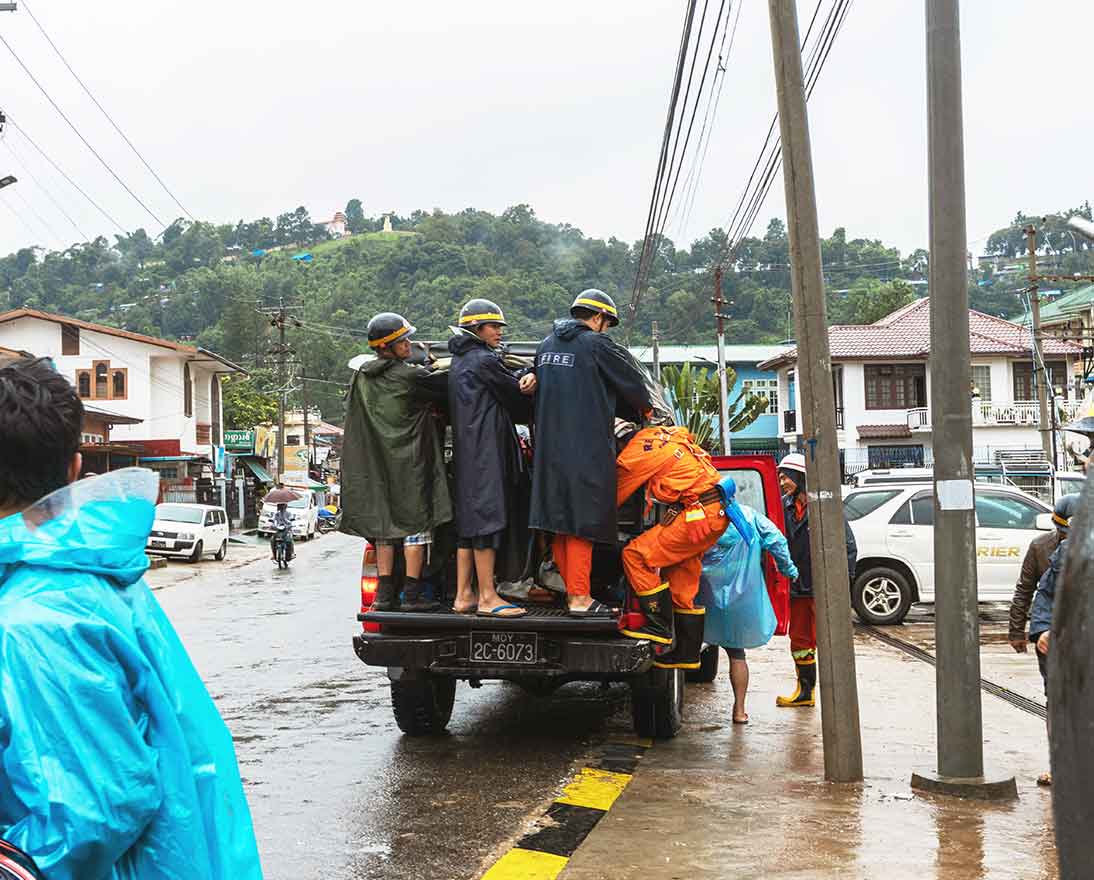
The Big Cat Tamer
From the frontline of wars to the frontline in the battle against climate change, Amar Rahman’s unique personal, professional and academic lives exemplify an important trait for today’s uncertain world: resilience
By Sean McAllister
Amar Rahman grew up surrounded by war and lived an almost nomadic existence. It’s why, behind his calm demeanour and gentlemanly manner, Amar embodies the word resilience.
Add to this his almost peerless understanding of Mother Nature’s greatest weapons – from earthquakes to windstorms – then it’s easy to understand why Amar is perfectly placed to advise customers on building resilience against climate change-induced events and other natural catastrophes, or nat cats. That’s why he is Zurich’s Big Cat Tamer.
Today, Amar is the Global Lead for Climate Resilience at Zurich Resilience Solutions. A new consultancy service that helps customers to identify, assess, mitigate and adapt to current and future climate change risks with tailored insights and solutions. It underscores Zurich’s commitment to sustainability and to limit global temperature rise to 1.5°C through support of our customers and communities.
Zurich already helps businesses protect themselves against existing natural hazards, such as hurricanes and wildfires. But Climate Resilience, by Zurich Resilience Solutions, also utilizes the latest climate change data to assess longer term risks that are being exacerbated by global warming. For instance, the impact of sea-level rise on a business location, or the effects of temperature rise on a ski resort.
Zurich’s decision to create Climate Resilience, by Zurich Resilience Solutions, came at an important time, says Amar, as natural hazards have become more frequent, severe and unpredictable in the past two decades.
“Twenty years ago, you were confident the risks you identified using natural hazards maps to design structures, cat models to price risk, and other tools, were not going to change much over time. That confidence is fast disappearing.
“The tools we used, and even the building codes designed to protect property and people, were based on historical data. But due to global warming, we cannot assume what happened in the past will accurately reflect the conditions in 20 to 50 years’ time,” he explains.
An uncertain world
Operating in an uncertain world, while remaining resilient, is one of Amar’s specialisms. Born in Iraq, his family moved to the U.S when he was aged five, and then to Canada when he was nine. Forced to move back to Iraq in 1979 due to some family formalities, Amar’s family had planned to return to Canada after six months. Instead, they got stuck for 12 years due to Saddam Hussein’s ascension to power and the outbreak of the eight-year Iran-Iraq war.
Amar had to learn Arabic quickly. He also had to adapt to Saddam’s dictatorship and to living under the shadow of three wars: the Iran-Iraq war, the Kuwait war, and the subsequent civil war.
But during this time, Amar was able to complete his bachelor’s degree in civil engineering at the University of Baghdad and worked as a construction site manager in the oil industry during his compulsory military service.
Following the Kuwait war ceasefire in March 1991 and his subsequent demobilization from the Iraqi Army, Amar immediately left Iraq never to return.
After completing further studies in Jordan, a PhD in earthquake engineering and a post doctorate in New Zealand, and a second post doctorate in Germany, Amar relocated to Switzerland in 2001. It was here he applied his academic experience on real life large-scale infrastructure civil engineering projects in the bridge, power and water desalination industries.
Amar joined Zurich as a construction risk engineer 10 years later. A few months into his new role, Thailand was hit by unprecedented flooding that disrupted many large multinationals, including Zurich’s customers. One of those customers asked if Zurich could create a detailed natural hazards assessment program for its global locations. Due to Amar’s extensive academic and industry experience on the topic, he was tasked to develop pilots that became a new customer service offered by Zurich Risk Engineering.
“My personal experiences have taught me to listen carefully. Not only to what people are saying, but also what they mean with their words and how they have understood what you have told them,” says Amar. “In other words, I’m very sensitive to the ‘mood in the room’, which helps when I’m explaining complex concepts to an audience with varied backgrounds.”
The consequences of inaction
Amar travels, often to isolated areas, to help customers identify risks and build resilience to natural hazards, including floods, windstorms and earthquakes. Despite the rise in frequency of natural hazards, and increased media coverage on climate change, Amar says not all businesses are focused on these risks.
“Natural hazards are not tangible, and they are low probability events. I often hear, ‘I’ve been here five years and never experienced a flood’,” says Amar. “It means we have to collect the evidence, package it in a story, and show them the consequences of inaction.”
When advising customers, Amar and his team of risk engineering specialists use various sources of data to analyze the potential impact of natural hazards, and future climate change-induced events. This may include claims data, history of events in the region, and site-specific engineering assessments. From this they can advise on a set of physical and management measures that will help build resilience.
“This granularity of data and insight allows us to explain the impact of climate change in a way that is tangible and relevant for our customers. We can also explain the potential financial implications of a flood, earthquake or wind event. This financial aspect is important as resilience requires investment.”
Is a perfect storm forming?
But future investment is a concern for Amar, as the financial fallout from COVID-19 could cause governments and businesses to reduce their investment in climate change resilience.
“COVID-19 is an immediate risk that we must tackle now. But I worry it may cause a reduction in investment in the maintenance and development of infrastructure such as sewage and drainage systems.
“If that happens, we could reach a perfect storm scenario where we see a rise in natural hazards and other climate change-induced events, but a decline in the quality and capacity of infrastructure, such as flood protection systems, to protect us from these risks.”
It’s clear, that if we want to tame the potential catastrophic impact from climate change, we need to invest in adaptation and adopt a mindset in resilience.


